Good city infrastructure ensures that its citizens have a comfortable and appealing environment to live in. Creatively designed public seating not only serves its utilitarian function but also becomes a small detail that makes a huge difference of how city dwellers experience city streets and spaces. City benches in modern cities stand out as landmarks and even raise social problems without compromising comfort for those who needs a moment of rest.
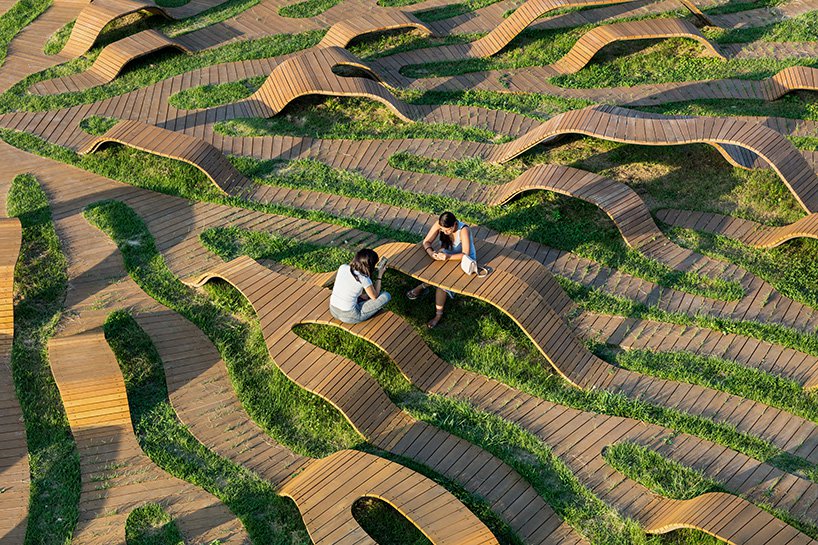
Korean architect Yong Ju Lee has installed the Root Bench, a circle-shaped public furniture with diameter of 30m in Seoul’s Hangang park. Resembling roots of a giant tree spreading throughout the park, it offers people surfaces elevated at different heights to lean, sit or lie on.
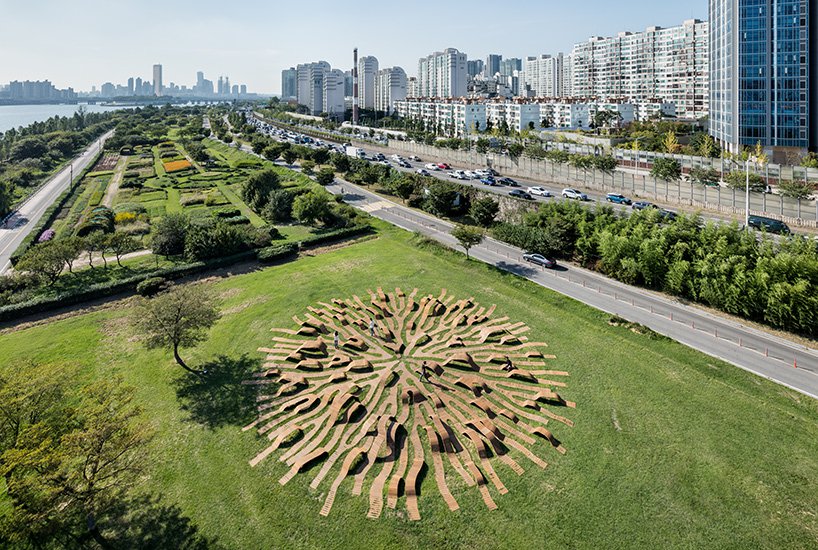
Root Bench by Yong Ju Lee; ph: Kyungsub Shin (source: Archdaily, also header image)
The main concept of the object is described by the architects as that of spatial connectivity: Root Bench is fused organically into the grass and blurs the boundary between an artificial installation and natural environment. While communicating with each other visitors of the park can find a place for them to relax and simultaneously enjoy the artwork. In this way the object provides to them different aspects of pleasure.
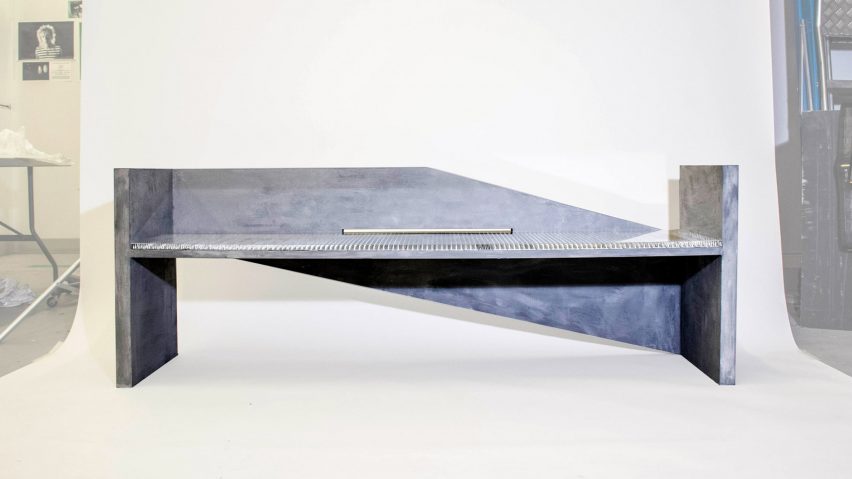
Hostile Bench by James Hughes. Source: Dezeen
Public seating in urban environment faces other challenges. The Hostile Bench by the Leeds Beckett University graduate James Hughes is aimed to provoke conversation about hostile architecture – pieces of infrastructure that are constructed to discourage people from using them in ways they are not intended – and its effects on the homeless. Hughes believes that though hostile design does provide certain benefits, it also makes city furniture impractical and uncomfortable, targeting the city’s most vulnerable – seniors, disabled and children.
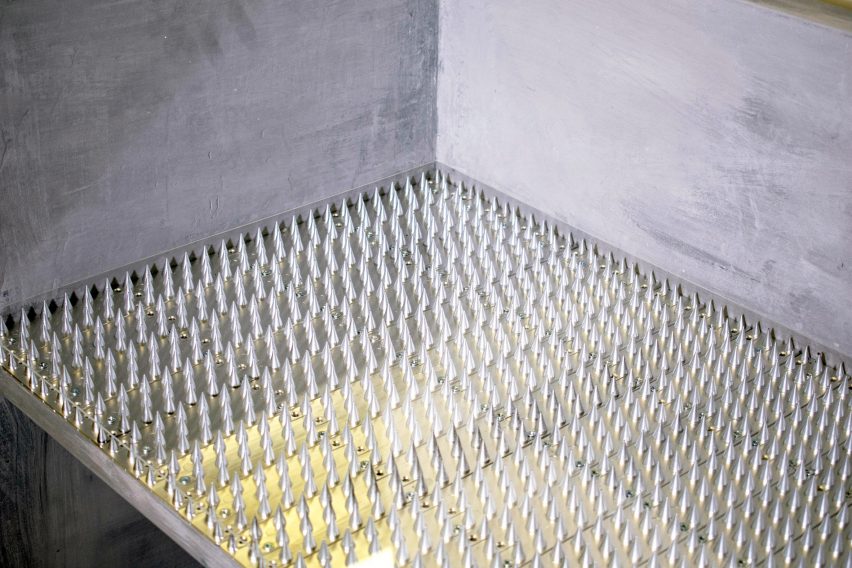
Hostile Bench by James Hughes. Source: Dezeen
The Hostile Bench features a seat that is covered in metal spikes that are overlaid with a transparent surface, all this making the piece possible to be used by everyone, but visually incorporating an element of hostile architecture. The bench has a concrete bod with no obtrusive armrests or gaps, meaning that the seat could also be used to sleep on.
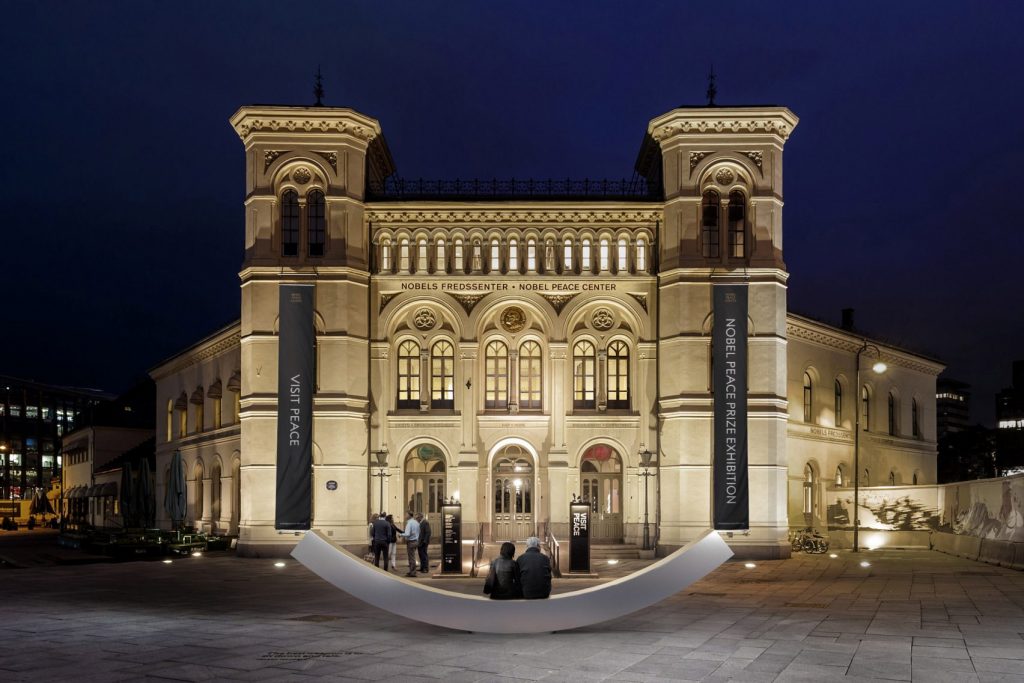
The Best Weapon by Snøhetta
The Norwegian architecture firm Snøhetta takes the idea of everyone living in peace onto the next level with their new work that oscillates between a bench and a sculpture. Described as a ‘peace bench’ and named the Best Weapon, in reference to Nelson Mandela’s famous quote ‘The best weapon is to sit down and talk’, the installation is shaped like a partial circle that meets the ground in its lowest point. The gentle arc of the bench pulls those sitting on it closer together which embodies an invitation to start a conversation.
The project is installed in front of the United Nations Headquarters in New York City to be later transferred to its permanent location near Oslo City Hall, where the Nobel Peace Prize is awarded annually. The bench balances its function as a piece of public furniture with its mission to communicate the values of the Nobel Peace Center as a symbol for discourse and peace.
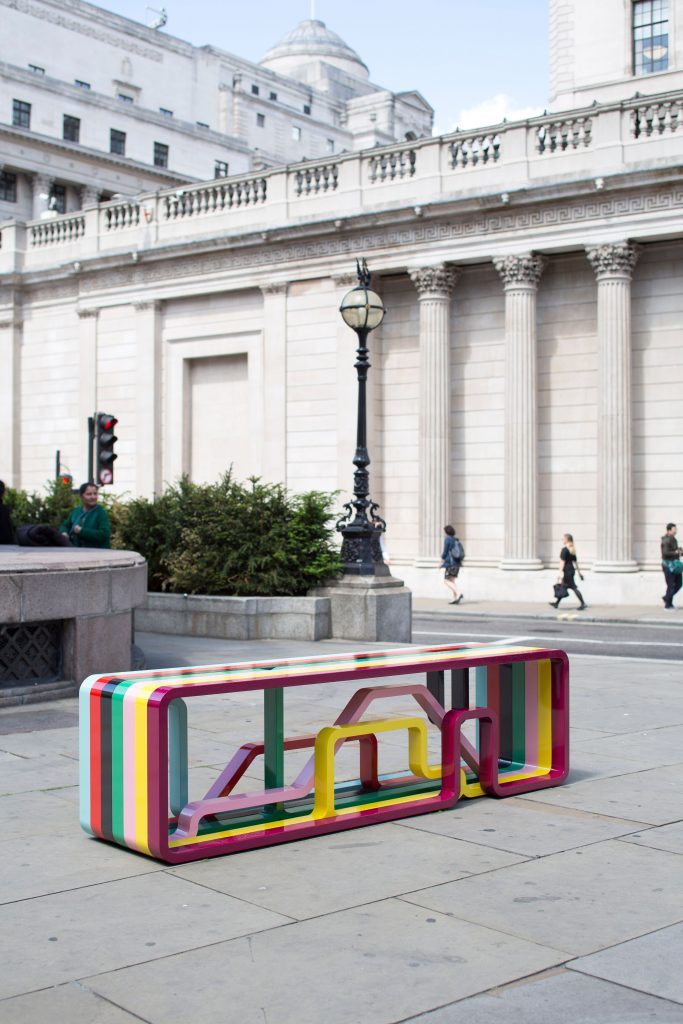
Correlated Journeys by Sarah Emily Porter in collaboration with James Trundle
‘City benches’ are the subject of the similarly named competition organised by the London Festival of Architecture in partnership with the City of London Corporation and Cheapside Business Alliance. It is intended both to showcase emerging talents and to offer imaginative places for people to rest amidst the bustle of their city surroundings. New public benches were specially designed by young architects and designers across the Cheapside district of the City of London.
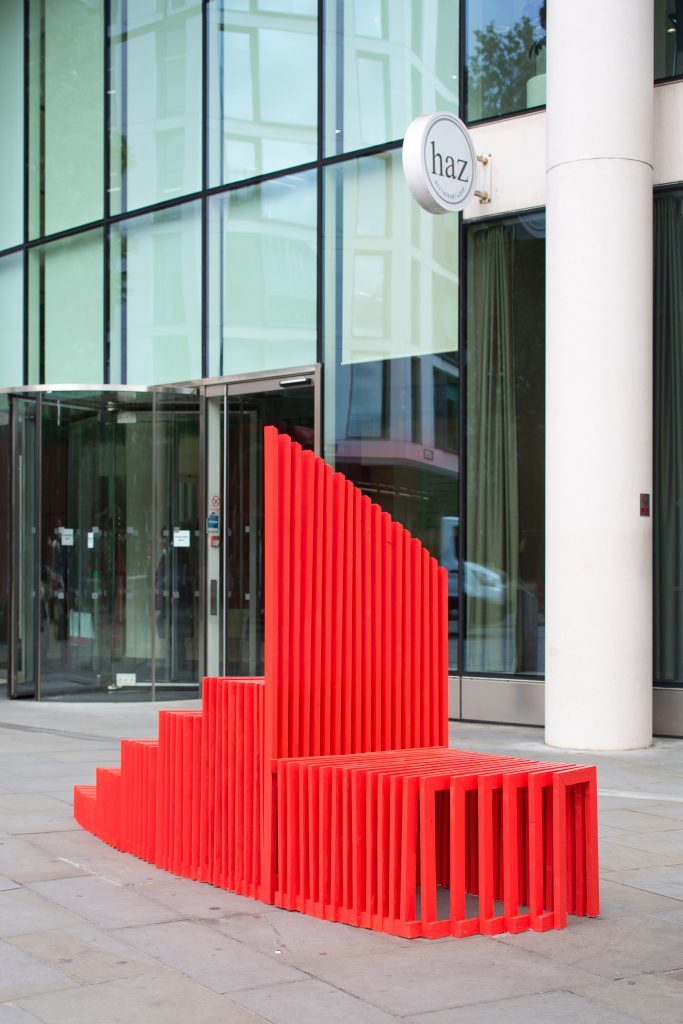
Benchtime by Anna Janiak Studio
‘Correlated Journeys’ by artist Sarah Emily Porter and maker James Trundle pays homage to London’s complex underground transport network, its form and colours represent the seven Underground lines running beneath the City. Inspired by the life-sized astronomical instruments of Jantar Manta, ‘Benchtime’ by Anna Janiak Studio acts as a gnomon to indicate the passage of time throughout the day.